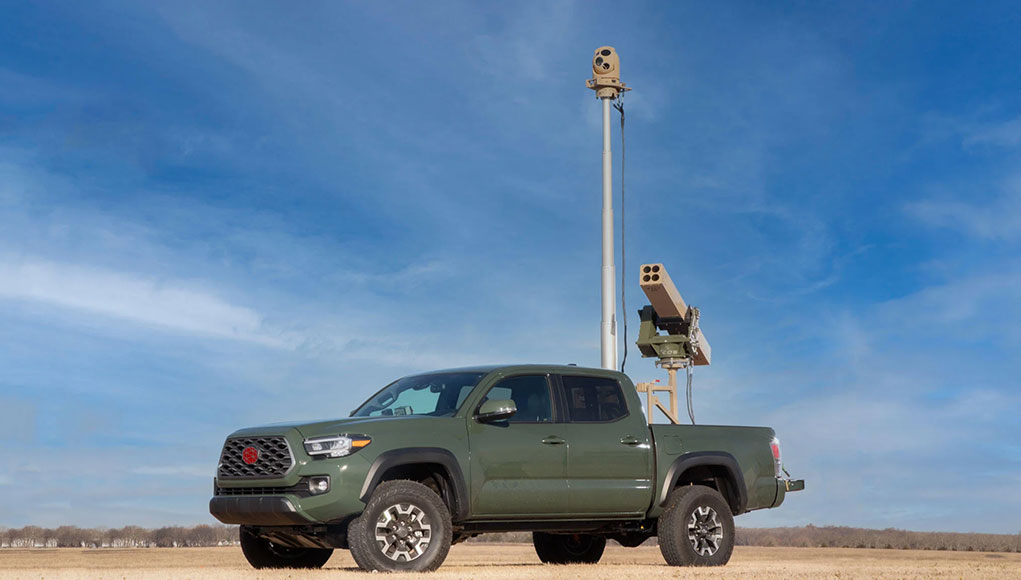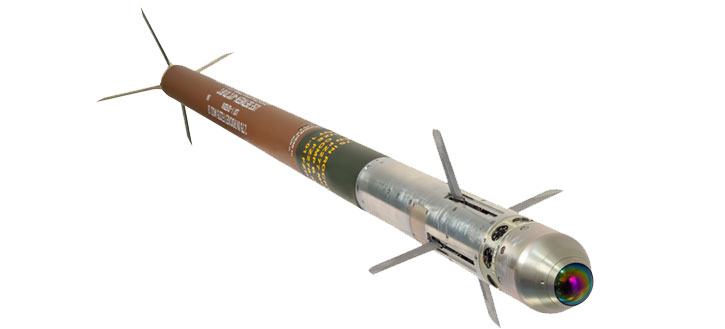While large caliber weapons such as the M142 HIMARS and its M31 GMLRS rockets are making the headlines in the Russian-Ukrainian War, smaller, more agile guided rockets have evolved, utilizing the laser-guided light rockets. Initially, these weapons utilized standard launchers, but recent developments from Thales, BAE Systems, and L3Harris have optimized the use of such weapons by helicopters, special operations forces, and unmanned vehicles.
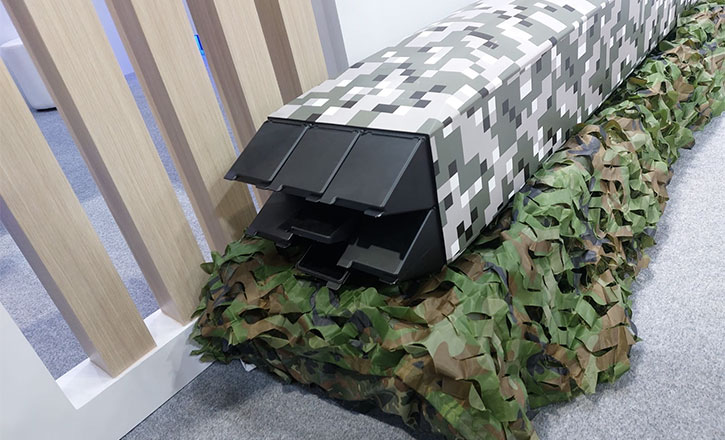
Thales has shown the FZ606 at the Thai Defense & Security 2022 expo. This is the latest version of the rocket launcher optimized for laser-guided 2.75” rockets FZ275LGR. The new launcher stores six guided rockets in closed containers, protecting the rocket and its seeker from foreign objects (FOD), and the rocket flux generated by neighboring rockets launches. The launcher also provides two-way communications between each of the rockets and the control unit in the cockpit, enabling target verification, pre-launch programming of the fuse, setting the ignition sequence, and performing the necessary pre-launch tests.
The FZ275LGR from Thales (formerly FZ) is the latest version of the 70mm rocket, positioned as a competitor to the US-made BAE Systems’ APKWS II and Turkish CIRIT from Roketsan. This rocket ranges beyond 6,000 m’ with hit accuracy below 1m CEP. It uses a laser sensor mounted at the tip of the fuselage, providing a wider field of regard for the sensor. Alas, at this position, the sensor is also vulnerable to damage from foreign objects, environmental effects, and the heat and debris of launches of neighboring rockets. Hence, the advantage of the new launcher.
The Cirit from Roketsan is another 70 mm laser-guided rocket system designed for helicopters, vehicles, and drones. The rocket can use one of three types of warheads – a multipurpose (armor piercing, high explosive-incendiary), high explosive fragmentation (anti-personnel) incendiary, and enhanced blast (thermobaric). Roketsan has developed a new launcher pod housing four rockets attached to the platform as an all-up round. The same pod can be mounted on various unmanned boats and weapon systems. These rockets are currently used by the air forces of Turkey, UAE, Bahrain, and the Philippines.
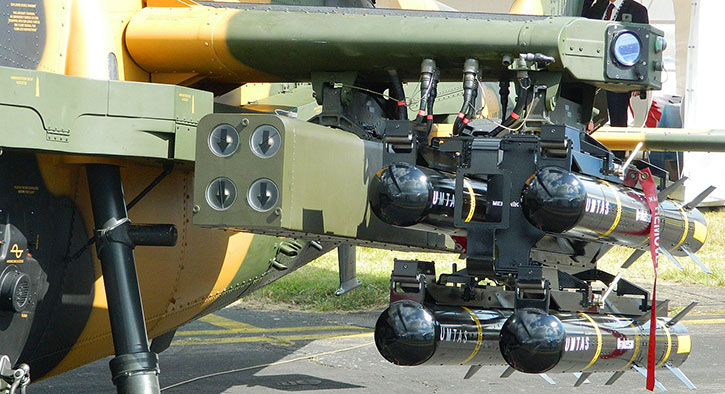
Other launchers equipped with unguided rockets haven’t suffered these effects as the rockets they use are more robust and less sensitive to flash and FOD impact. With the new launcher, the 275LGR can lock on lased targets as soon as the launcher blind is opened, performing the ‘lock on before launch’ (LOBL) technique. Other guided rockets, such as the APKWS II, employ a matrix of four laser sensors mounted on the folding fins, thus keeping the sensor protected in the launcher until the rocket is launched. This method enables the rocket to acquire targets only after launch (LOAL), a shorter process prone to errors.
According to sources at Thales, the 275LRG uses improved propulsion providing a steady burn rate, resulting in stable trajectory and flight with higher accuracy. The weapon uses a high explosive fragmentation warhead with a high-performance armor-piercing warhead in development that will be able to penetrate frontal armor.
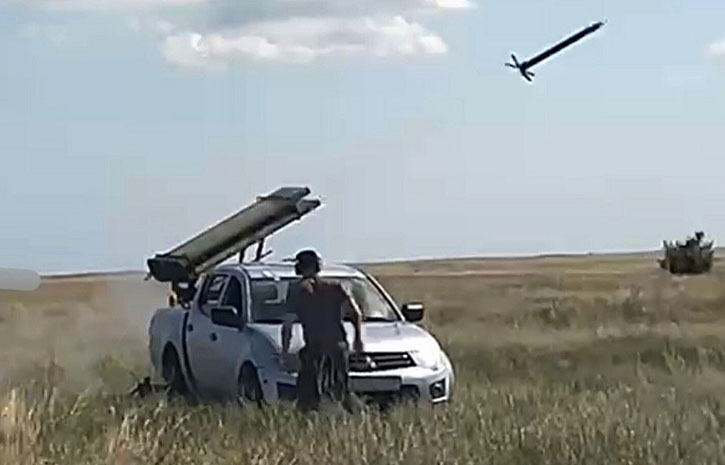
Lightweight rocket launchers for laser-guided weapons have evolved recently to provide agile and effective firepower for special operations forces and light manned and unmanned aircraft. Another launcher making its debut in the warzone in Ukraine was the Vampire – HarrisL3’s Vehicle-Agnostic Modular Palletized ISR Rocket Equipment (VAMPIRE). The modular system provides precision strike capability with ground-to-ground or ground-to-air laser-guided munitions. VAMPIRE can be mounted on commercial or tactical vehicles. Is designed to fit in any pickup or vehicle with a flat surface. It comes with a power supply that enables mounting on civilian vehicles using 12V electrical systems.
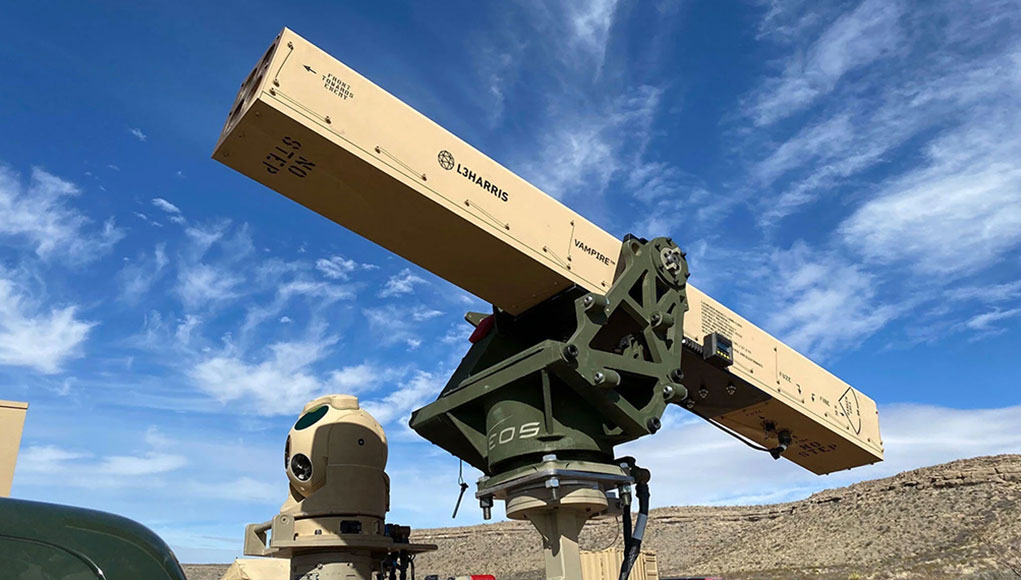
The launcher uses the Fletcher LGR4 quad launcher from Arnold Defense, loaded with four APKWS II laser-guided rockets. Such rockets can be used against ground targets, drones, and helicopters. This launcher can also fire unguided rockets using the ballistic fire control computer, but its main advantage is using laser-guided rockets, supported by a mast-mounted electro-optical payload system capable of designating targets within line of sight.
